
California Sycamore Platanus racemosa
Sycamores often grow to 120 feet and more. They often have divide and multiple secondary trunks. They are found in flat planes and in or near riparian (riverside) habitats where water is near the surface.
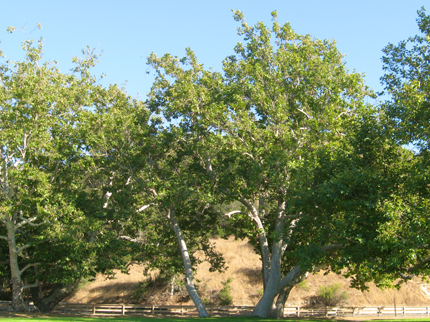
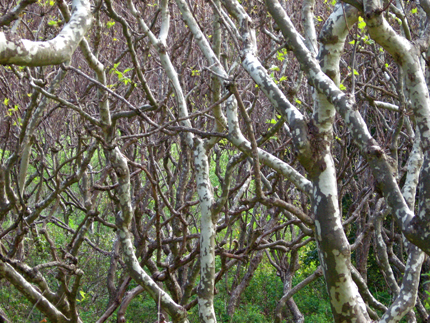
Sycamores in a canyon near the Pacific Ocean are "dwarfed" by the frequent salt fog.
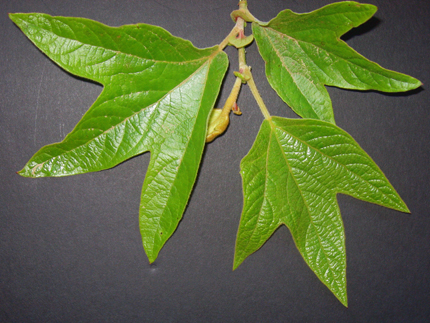
New spring leaves
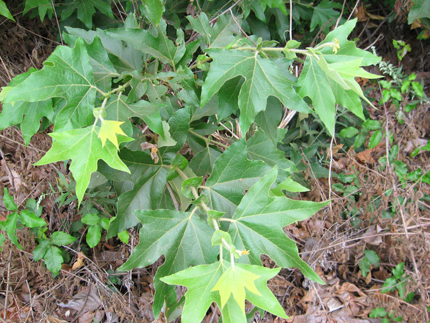
Palmately lobed leaves with poison oak in the background on the forest floor. Late summer leaves get quite large.
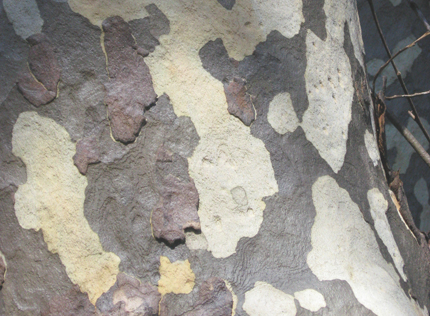
The distinct bark flakes in shades of off-white, gray, lignt brown, and even pale green. The unique mottled bark of the Sycamore makes it easy to identify.
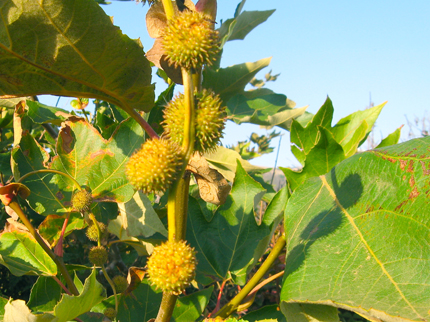
Sycamore spiked fruit clusters in fall.
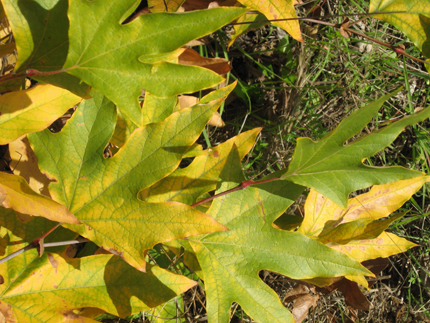
Autumn leaves turn bright yellow.
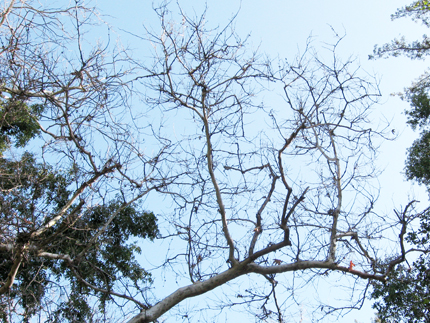
Sycamores are a diciduous tree that looses it leaves in the winter months.
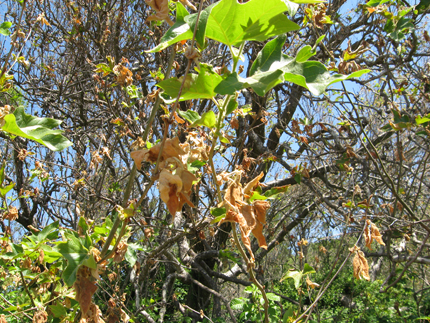
In coastal areas of the Santa Lucia Mountains Sycamores early spring leaves will get infected with a fungus that wilts and turns the leaf brown. Once the leaves drop a second growth of summer leaves emerge.
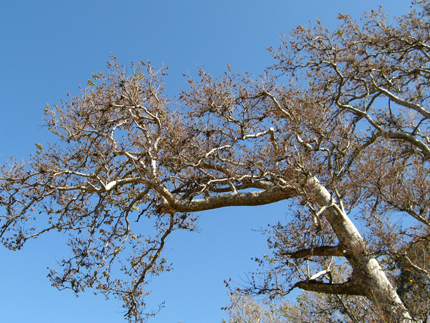
Late spring, and early summer Sycamore leaves will brown out and die back. This die-back occurs regularly along the central coast of California.